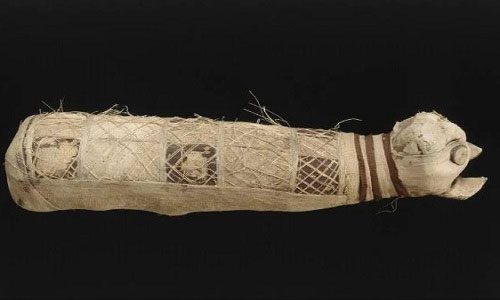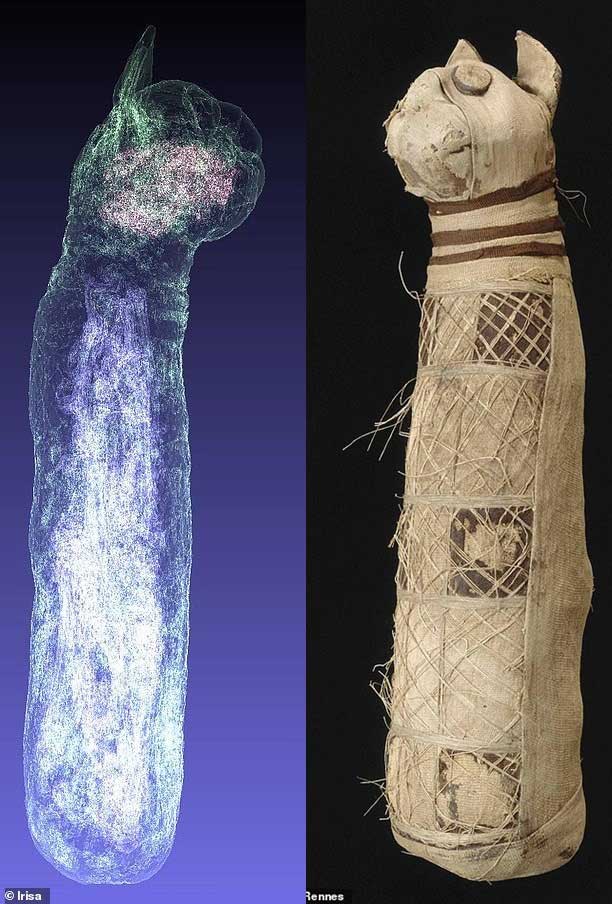Through CT scans, experts at the National Institute for Preventive Archaeological Research in France (INRAP) have discovered the most unusual cat mummy in the world. This is the mummy of an ancient Egyptian cat that has three tails and five hind legs.

The cat mummy at the Museum of Fine Arts in France. (Photo: Sun).
Experts at INRAP scanned the 2,500-year-old Egyptian cat mummy and created a 3D model. They brought the mummy to a veterinary clinic for imaging and were astonished to find that it was actually a composite made from parts of several different cats.
The cat mummy has five hind legs and three incomplete tails. Remarkably, the creature lacks rib bones or a spine, and the head of the mummy is essentially a woven ball.
From this, researchers concluded that the mummy was made from body parts of various cats rather than a single cat, which is typical for mummification.
“There are millions of animal mummies. Some are hollow, others contain just a single bone, and sometimes the cat is intact. Some researchers suggest we are encountering a trick by ancient priests. In contrast, we are confident that there are countless ways to mummify animals. We will learn more after imaging the body,” said researcher Theophane Nicolas.

The cat mummy was used as a religious artifact.
Mummifying animals was not only a way to preserve pets but also served as religious offerings. Researchers believe that ancient Egyptians offered animal mummies as sacrifices to the gods or kept them in tombs to accompany them in the afterlife. The Egyptians cherished cats and even worshipped a cat-headed goddess named Mafdet during the First Dynasty around 3400 – 3000 BCE. This deity played a crucial role in the spiritual life of the people, serving as a protector of the home, fertility, and healing.
As a result, many temples dedicated to the goddess Bastet were built in Egypt. People not only regarded cats as sacred animals symbolizing the goddess Bastet but also mummified these animals when they died to show their reverence.


















































